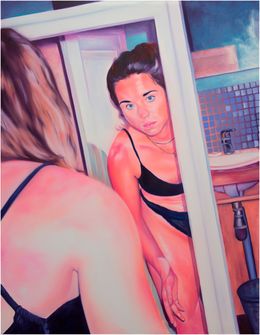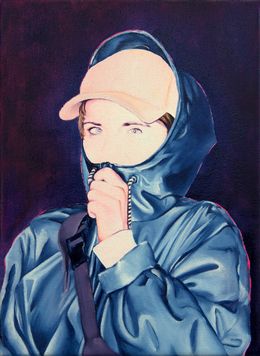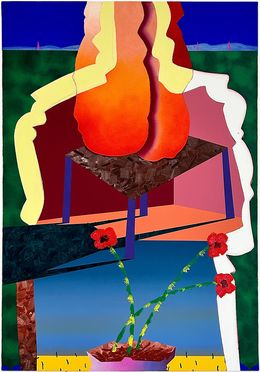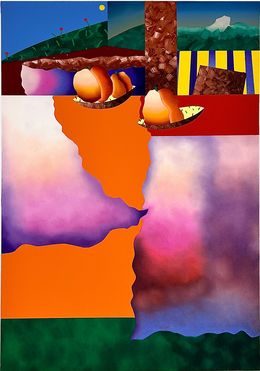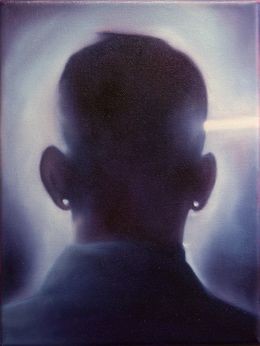"Life, as far as we can remember, is what happens in the intervals, between events, a fleeting feeling of happiness, a pain that we forget."
Annie Ernaux – Les Années
In "Les petites choses", a group show visible from June 20 to July 20 at the Galerie Bessaud, 5 French artists celebrate the beauty hidden in everyday life, help us perceive these little things that, while sometimes seeming trivial, give meaning to existence.
For Lola Ripoche, a Lyon artist trained at the Boulle school and the Ecole nationale supérieure des Arts Décoratifs in Paris, we must raise our eyes and pay particular attention to the celestial. She thus develops a formal and conceptual research on the capture of particulate sensations and clouds, universal artifacts that synthesize as much questions of representation as issues related to our connection to the environment, between smoke, smog of pollution and cumulus clouds of good weather. The artist develops mixed techniques of sfumato that explore the relationships between support and surface to lead us to look at what we see.
For Caroline Karenine, it is about remembering and immortalizing these places and moments that have accompanied her since her childhood. To do this, she imagines organic assemblages of fragments of porcelain, paper and threads, in a poetic abstraction inspired by impressionism and the art of Asian prints. The interplay of weaving and perforations of the material function like so many brushstrokes and create a fragmented cartography of these landscapes and sensations that she wishes to remember forever. From a personal memory, it becomes that of all. The only landmarks on this map are the titles of the works. Like clues, they reveal a season, a moment or a place.
For Silvio Mildonian, joy lies in the evocation of the simple elements that forge his roots. Ancient and Armenian roots first of all, with a motif whose variations he obsessively probes: the apricot. It is said that it is the fruit of Armenia and one of its strong symbols. Legend has it that Noah, upon disembarking from the ark and following the floods that struck the Earth, replanted an apricot tree. Only this tree would have resisted in the heart of these submerged soils, the cataclysm having destroyed everything in its path. The fascination linked to this solidity is a way for the artist to materialize the force deployed by all living things to become as robust as this tree and resist the hazards of life.
The second roots he evokes are those of his native region, between Marseille and Provence. He depicts them with happiness and an apparent letting go that nevertheless hides a rigorous work of composition. It proceeds from a series of superpositions, accumulations, reframing, and mobilizes a wide range of tools and techniques. Oil pastel, oil paint, spray, acrylic…: the artist mixes textures and renderings to better experiment with new approaches and “tame chaos”, in his words. The result is an effervescent and exuberant painting, with assumed freedom.
The artist Emile Orange, who lives and works in Caen, uses a figurative lexicon, influenced by photography and cinema, to reappropriate what he goes through on a daily basis. He creates narrative images in which the light of electric lighting and that of a sun that is too low mingle. Color is an essential element in his work, it allows him to express the fascinations and worries that run through him. The use of fluorescent pigments makes his painting difficult to reproduce, and one can only fully enjoy it by being in front of it. His references are as much the silence of Edward Hopper, the intrigues of Jacques Monory as the vibrations of Nina Childress. In short, he transfigures the little things in his life and gives them an almost cinematic grandeur.
For the artist Léo Dorfner, it is about dissecting and then rearranging all the fragments that shape our daily lives: popular and media representations, advertising icons, visual memes… He draws a rock mythology of the contemporary that is as incredulous as it is undisciplined. Through borrowings and quotes, through arrangement, collage and marking, he gives shape to fragmented narratives, often absurd and anachronistic. Deeply poetic, his work is based on a taste for graphic experimentation and the care taken in composition, at the heart of a plastic game between the texture of the paper, the quality of the line, the nuance of the colors and the possible captions that illustrate them. The urban stories to which he invites us thus reveal the beautiful impertinence of his gaze and the capacity of superpositions of images to make sense, against all logic.
Read more

